Surveying Wood Hulls
by David Pascoe
Now that I have roundly criticized the Coast Guard for their role in the EL TORO II tragedy, its only fair that I should offer some effective solutions on how to prevent these casualties in the future. I fully recognize that it is easier to be critical than to solve the problems being criticized. Yet, in the EL TORO II tragedy, a wooden vessel which sank and killed three people because of wasted hull fasteners, the NTSB and the Coast Guard blamed a lack of "adequate guidance" for the CG's failure to locate these faulty conditions on EL TORO.
The EL TORO II Tragedy
Sinking of Party Fishing Vessel
An independent Review of USCG Investigation Report
EL TORO Addendum
Law Suit
EL TORO II: The NTSB Report
This essay proposes to fill the alleged gap by offering a general discussion of how to approach the survey of a wood hulled vessel. In addition, I would recommend a thorough study of WOOD: A Manual for its Use As a Shipbuilding Material, Department of the Navy, 1957, ISBN 0961060204, and Ian Nicholson's Surveying Small Craft, Sheridan House, 1987.
I also recognize that in this day and age when very few wooden boats are being built, and most have gone the way of buggy whips, there's not much opportunity to gain experience in wood vessel survey. Yet the overriding feature of the surveyor's art is just that: experience. And since the Coast Guard is reported to survey over 1400 wood vessels annually, certainly no one has a better opportunity to gain that experience rapidly and amass a large body of comparative data rapidly.
As their own studies and data has shown, the U.S. wooden boat fleet is aging and deteriorating. Because of that, the of accidents like EL TORO are likely to increase unless the CG does not only a better job of surveying them, but also of mandating repairs or condemning them once structural deterioration has reached the point of no return.
Let start with the point that most independent surveyors I know are no longer in the business of performing prepurchase surveys on wooden boats and the reason is simple. Surveyors have learned the hard way that surveying wood boats is very difficult and fraught with risks. As private individuals, marine surveyors cannot fall back on lame excuses such as not having adequate guidance, or not finding any evidence or being inhibited in one way or another at locating serious safety defects. The civil courts charge us with the utmost degree of care in conducting that survey, and we are held accountable when we fail, an accounting that more often than not destroys our careers.
This is not to say that serious structural defects cannot be found with relative ease if one knows what he's looking for. In my 30 years experience with wooden vessels, its a maxim that structural problems always manifest telltale signs. The difficulty is that the inspector must be expert, and must have a great deal of experience in knowing what to look for in order to find them.
It should be recognized that the following discussion covers only the most basic aspects of wood hull surveying. It would require an entire book or series of books to address the subject in its entirely.
The Materials
Before getting into the heart of the matter, lets first consider the nature of the materials that we are dealing with, for this will give us a far better understanding of why severe problems frequently go undetected.
Wood is a natural, organic material that has no consistency from one species to another, or within a species. Each tree grows differently and yields different qualities of wood. Consistency may or may not exist. There are literally hundreds of varieties of species wood used in construction, and these species also have an equally wide range of strength and other characteristics. Of all these species, only a very few have the ideal characteristics of good strength and resistance to deterioration. (here deterioration means fungicidal micro-organisms and electro-chemical degradation). Woods like teak, cypress, fir, long leaf yellow pine, mahogany and only two of hundreds of varieties of oak fit the bill. But over several thousand years of boat building, these most desirable species have been consumed and all but disappeared, causing builders to have to utilize ever lower grades of material.
"Wind shakes" are a phenomenon caused when a tree is hit by high winds, causing the whole trunk to twist. This can damage the wood in ways that aren't easily detected. It causes minute splits in the fibers which will make the wood more porous and cause a plank cut from that tree to rot much quicker. This is why we often find just one plank on the whole vessel that rots badly with no apparent explanation for why.
Teak and cypress, among others, are highly valued for their fungi resistance. That resistance comes from certain chemicals in the tree that are toxic to fungi (and man as well). These trees can also grow in soil where those chemicals are absent, meaning that they will not be present in the wood and therefore not be rot resistant. This also explains why rotten planks and frames will appear in places where it is not expected.
Strength of Wood is degraded by a variety of factors: soaking in water for 10, 20, 30 or more years, micro-organisms, shipworms, ants, termites, the normal stresses imposed on the hull, sunlight, constant wetting and drying and chemicals introduced into the interior of the hull such as spilled battery acid, petrochemicals, detergents and chlorinated cleansers, etc.; all work to take their toll on wood. In other words, unlike materials such as fiberglass and aluminum, wood is degraded by a large variety factors.
Metals Wood construction, of course, must utilize some sort of metal fasteners to hold it together. As with the quality of the wood, the quality of the fasteners used in the trade can run from very poor (steel) to fairly good (silicone bronze) to excellent (monel). As with everything else in this world, the higher the quality, the more it costs. Thus, the ever-present tendency to reduce quality to reduce the cost of the product. This is one thing the surveyor should never loose sight of, for it can also come back to bite him if he does.
Metals , of course, are all subject to corrosion, a phenomenon which is subject to much myth and little understanding. In industry, corrosion is still one of the most highly studied areas of metallurgy. Even after billions of dollars of research, all of its causes and effects are still not fully understood. So when we think that we have some understanding about the nature of corrosion, we should think twice.
The final consideration of materials leads us to consider how they all work together, and it is here where the general understanding of wooden vessels usually falls short.
Corrosion
Corrosion is a natural process that works to degrade all materials, whether its gold, rock, plastic or steel. Corrosion occurs in many forms, most of which are not common knowledge, even in the marine industry. The ones we experience most often are oxidation reduction, galvanism and electrolysis. I will start with the last first because it is so misunderstood.
Electrolysis is the same identical process used in electroplating. It occurs only with DC current and essentially moves material from an anode to a cathode. Theoretically, electrolysis cannot occur from AC current, although in reality stray AC current can be converted to DC current through naturally occurring diodes such as salt crystals. That's why electroplating can only be done with the very expensive process of using DC current. Otherwise, plating would be cheap and not as expensive as it is.
Electrolysis only occurs on boats when there is a ground fault and it is leaking current, usually from bad wiring. Small current leaks are commonplace and are rapidly dissipated in surrounding metals without doing damage. Larger current leaks, as when a significant part of a large conductor has a ground fault, can produce very damaging corrosion. People often see heavy pitting on propeller blades and rudders and attribute this to electrolysis when, in fact, it is usually the result of yet another form of corrosion, erosion corrosion caused by fast streams of water laced with air bubbles. Erosion corrosion is strictly a mechanical form of corrosion.
Galvanism This is a from of corrosion caused by a current flow generated between two materials with greatly differing electrical potentials. Contrary to popular belief, galvanism does not occur just between two different metals; it can occur between other materials, such as carbon rubber and a metal. Carbon rubber mated against aluminum, for example, is a disastrous combination that will destroy aluminum very quickly. This is often found in carbon rubber hose joined to aluminum or copper pipes and is often referred to as electro-chemical degradation (ECD).
On wooden boats, galvanism is rarely a factor except in small isolated areas. When two dissimilar metals are mated electrically, they generate a very small amount of current that has little power. That means that the electricity generated has little capacity to flow very far before being dissipated. Wood is an extremely poor conductor, and sea water wet wood is not much better, although it will conduct current for short spans before being generally dissipated. For this reason, stray current in a wooden hull does not have the capability to generally damage hull fasteners, even when underwater metals are bonded. When zincs are attached to the system, all potential for galvanism is eliminated so long as the zincs remain effective.
Bottom fasteners, of course, are not normally exposed to water, and thus their chance of being affected by stray current or galvanism is even further reduced. Thus, galvanism rarely, if ever, is a factor in hull factor corrosion.
Stray Current is the cause of true electrolysis and can cause damage to fasteners if the leaking voltage is high enough, has sufficient power flow (amperage) and continues long enough under ideal conditions. However, I have never found a case where stray current damage to fasteners was not also accompanied by severe corrosion damage to exposed, submerged metals such as propellers, shafts, sea cocks and the like. Absent such damage to exposed metals, there is no reason to suspect stray current damage to fasteners as fasteners are the last to become damaged in the chain of events.

The effects of stray current are usually unmistakable. This is the remnant ofa zinc anode attached to a bonding system that was subjected to a full twelve volts, leaving an obvious burn pattern. The zinc did its job and and the problem was caught in time before serious damage occurred.
Electrolysis, or stray current corrosion is usually notable by the very bright appearance of the corroded metal. When the pitted part of the metal is bright, that means that the corrosion is so rapid that oxides have no chance to form. That's particularly true with all copper-based alloys like brass and bronze. When the surface is dull, but still brightly colored such as pink or orange, this tends to indicate a less rapid rate of corrosion, but stray current nevertheless.
Oxygen Starvation This is the primary cause of corrosion to hull fasteners, also known as crevice corrosion. Oxygen starvation is not the simple form of chemical reaction with water that causes rust or other surface oxides, but the result of water being trapped in a small, confined space where the oxygen supply is cut off. Surveyors are familiar with this phenomenon on aluminum fuel tank bottoms mounted on a wet plywood deck that results in rapid and severe corrosion pitting. What most surveyors have never understood is that this same phenomenon occurs with metal fasteners joining two pieces of wood together, or any other material for that matter.
By the time a surveyor has pulled a thousand bronze screws out of hull bottoms, it becomes readily apparent that the wastage of the screws, or necking as its sometimes called, always starts at the center of the screw. This coincides with the interface between the plank and frame. The reason it does is because the seam between plank and frame is subject to the capillary effect which, as we know, is the tendency of water to follow along cracks, seams or fissures. Therefore, anytime the plank/frame interface is wetted, the water is going to head straight for the screw.
Now, the screw, being spiral threaded, creates the tendency for that water to follow the treads right up and down the shank of the screw. Occasional wetting of the fastener is not, of course, a problem in and of itself. But once the fastener is wetted a few times, it acquires a slight layer of soft and very porous oxides. Normally, these oxides would serve to protect the screw from further corrosion, but something else interferes. The oxides on the screw surface further enhance the capillary effect the same way that beach sand absorbs water. Thus, once the corrosion process starts, it can only accelerate.
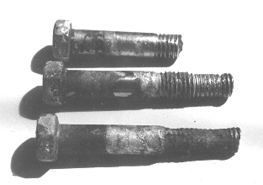
Corrosion of stainless bolts by crevice corrosion or acid attack. The prominent feature is that the active corrosion areas are bright metal.
Unfortunately, yet another factor gangs up on our poor fasteners: crevice corrosion. The water entrapped within the screw cavity or interface between the planks does not have a good oxygen source. i.e., air flow. The chemical reaction of oxidation of the metal robs the water of oxygen and turns the water to an acid. So what we now have is first, oxidation followed by acid attack which really does the most damage. These processes are endlessly repeated over the years, at an ever accelerating rate until the fastener is finally destroyed.
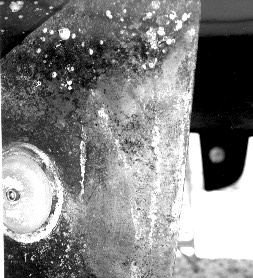
This is erosion corrosion on a rudder blade caused by propeller wash. It is often mistaken for electrolysis.
The feature that often leads surveyors and investigators to the conclusion of galvanism stems from the fact that oxidation reduction or acid corrosion usually leaves the eroded metal bright-looking and without the usual covering of granular oxides. Based on what we usually see of galvanic or stray current corrosion, this seems like a reasonable conclusion but its not. Acid corrosion is usually recognizable by pink and black residues on a bronze fasteners. On a steel fastener it tends to be very black. If there is no black but just pink residue on the bronze fastener, then water is getting to it on a continuous basis.
Other Factors
Climate The effect of climate on wood vessels simply cannot be understated. In the Baltic sea archaeologists have been recently pulling up very well preserved parts of wooden vessels that are 600 to 1,000 years old. In the tropical waters of Florida, vessels sunk as little as 60 years ago have completely disappeared. Of the many Spanish galleons of the silver fleet sunk on Florida shores 300 years ago, almost no wooden parts remain. Such is the effect of warm, tropical waters on wood. Cold water, of course, has a preservative effect on both wood and metal.
The other great enemy of wood are very damp and rainy climates, especially moderate and tropical climates. In itself, salt is a preservative because fungi can't survive in a salt environment. But nothing advances fungicidal attack on wood like nice, fresh rain water. Of course, one of the greatest maritime myths of all time is the notion of "dry rot." Wood does not rot unless it has a source of water. Fungi does not live, and wood does not rot in the desert. Therefore, there is no such thing as dry rot.
Fresh water often does its worst damage when it leaks into a hull. This happens in several ways. First, water from the decks runs down the sides of the hull and gets absorbed into open seams in the planks. Second, deck leaks run down the inside of the hull where the same thing happens, but also ends up laying in the bilge where there is often a perfect environment of nutrients for fungi to blossom.
The problem for surveyors is that boats don't stay put and you don't know its past history and where it came from. Therefore, one has to expect the worst.
Hull Stress The deep bilge of course is always the first place the surveyor looks for bad fasteners, for it is here where there is a constant source of water. Yet boats are not monolithic structures and they are subjected to stress and thus work and torque and wrack and twist in all directions. Often not enough to be visually detectable, but enough that all the seams and joints are indeed moving. Projected over thousands of cycles over the years, this creates the potential source for water entering virtually any seam in the hull bottom, not once but hundreds of times.
Any surveyor who has spent a significant part of his career surveying wood boats knows that, other than the garboards, wasted bottom fasteners can occur anywhere, and just about any point in the life span of the vessel. He knows its not reasonable to apply any particular time limit, for it is entirely dependent on whether open seams are allowing water to get at the fasteners.

Hogging, a condition in which a hull is actually sagging with age, is an accurate indicator that a wood hull has reached the point of severe structural degradation and can no longer be considered safe. This condition is plainly evident on the above yacht.
Wood and Water The structure of wood is made up of very oblong cells of cellulose fiber. Living wood conducts water soluble nutrients along the grain of the wood, or from end of cell to end of cell, ultimately to the top of the tree. Wood does not transmit water across the grain very well at all, either from the edge or the wide surface. We have only to stand up a plank in a pan of water to understand how well this works. Very soon, the plank will empty the pan of water.
Because a plank is no longer a living organism, it has lost much of its ability to transmit water along its length. Eventually it reaches what is known as equilibrium level and will absorb no more. Complete saturation of the open cells will only occur a short distance from the end grain unless rot sets in and then it will advance further.
When it comes to fasteners, the effect of this point should be rather obvious: fasteners near the ends of planks are the ones most vulnerable.
How to Survey A Wood Hull
The Interior
Contrary to common belief, a great deal can be learned about the condition of a hull from examination of its interior. One just has to have experience and know what he's looking for. I have condemned hundreds of wood hulls long before the survey ever got to the haul out stage and I'll explain how and why.
Opening Up Concealed areas within a hull are always a problem but, most wood vessels are constructed in such a way that enough access is available to make a fair assessment. It is usually possible to pull up floors (such as screwed in place plywood panels and the like) and remove enough paneling that one can get a fairly good glimpse of the bottom and lower sides. Carrying an electric screw gun is a must in order to do this quickly and effectively.
Yacht surveyors do carpeting and beds. That means one has to move a lot of mattresses, bedding, carpets and emptying out of lockers, etc. Once the interior is opened up as best possible, he's ready to begin. The above discussion provides a lot of clues as to what to look for.
Planks & Frames Three important tools are a slim but heavy gauge pry bar - of the sort used for pulling nails - a heavy hammer and a large standard blade screwdriver. Check the joints between planks and frames visually, looking for gaps or any sign that the plank is not tight against the frame. Then use the screw driver to test the wood for softness on both plank and frame near the mating surface. If the frame is cracked or the wood is soft, one doesn't have to go any further. Soft wood and cracked frames are dangerous conditions that mandate repair.
Try to slip the pry bar under the frame and pry gently. Does the frame move or rock slightly? If so, there is a fastener problem. This should be done at every opportunity along the keel or garboard area. If the frame ends are split or soft, repairs are necessary. If dealing with tall, sawn frames, one can hit the frame with the hammer to see if it is loose.
Weepage Weepage is a process of very slow leakage, very often involving the capillary effect in addition to just water pressure from outside the hull. Weepage is not referred to as leakage because the rate is so slow that the water evaporates nearly as fast as it enters the interior. It can occur with no sign of wetness, but inevitably leaves some trace of its existence such as stains, accumulation of salts and so on.
Certainly its not feasible to go through the entire hull testing all frames and planks in this manner, and fortunately it is not necessary except for the keel area where this needs to be done wherever possible. Further up from the keel, we can limit our physical testing by looking for signs of weepage. Anytime there is evidence of water migrating through seams, corrosion of fasteners has to be suspected. Weepage shows up in various ways, often depending on whether the wood is painted or bare, its age and so on.
In addition to water stains and evidence of corrosion such as rust or green copper oxides, accumulations of dried salts and so on, angle hair, or shredded wood fibers is a dead give away of weepage. Contrary to mythology, angle hair or fuzzing is not caused by electrolysis but rather the constant wetting and drying of salt crystals within the wood fibers which damages the wood cells. This effect was first recognized in the cypress timbers used to shore up the Morton Salt Company mines under Lake Erie. It was found that exposure to raw salt over time caused the wood to become badly shredded. This is a condition which only occurs in sea water and is often found around sea cocks, butt blocks, port holes and engine room vents, along with any other location where water is leaking from the decks above.
On the hull bottom and lower chines, it means weepage and that hull fasteners in any area which reveals this condition must be considered as suspect. This condition is not associated with fungicidal attack because the high salt levels preclude fungus. Scrape the fuzzy area hard with the screwdriver blade. If it is only superficial, this condition can be stopped by wire brushing and sealing the wood, followed by finding the cause of weepage and stopping that too. This condition only affects the inner surface that is exposed to air and evaporation, but once the surface is fuzzy, it has increased evaporation capability through wicking and must be addressed. This condition will not extend between the plank and frame, but will draw water into the fastener area because the accumulated salts are hydroscopic and attract and condense moisture out of the air.
Use the large screwdriver for testing the hardness of the inner planking, particularly in the deep bilge or any place that is wet or looks suspect. I suggest not using an awl or ice pick because this tool penetrates the wood too easily and may give you a false impression. The screwdriver blade is just right, and if it goes into the wood, you know for sure that its deteriorated. Poking around like this is quick and easy so that most vulnerable areas can be quickly covered.
Chine Areas The chines are an area not only of high stress, but an area that is also prone to leakage. And it is this leakage that endangers the fasteners. The surveyor should take every opportunity to inspect the chine areas and when evidence of weepage is found, the area should be targeted for special attention. Remember that weepage is the precursor to corroded fasteners.
Bottom Frames are often joined to side frames with knees that are through bolted. Looseness or corrosion on these bolts are a warning sign that all is not well.
Forefoot The two most common areas for sprung planks to occur is the garboard and the forefoot area. The forefoot planking is difficult to check because this is the point where the planks narrow into the stem. But, again, signs of weepage or leaking is usually present when fasteners are wasted and planks are loose. Use the screwdriver and insert the blade into the intersect of plank and stem and push hard. This should be done on both sides in every area that can be reached. Again, this does not take long if the area is accessible and will readily show up rot and looseness.
Transom The intersect of bottom and side planking to the transom is yet another area where leakage and deterioration are prevalent. This area is also often difficult or impossible to reach, being obscured by fuel tanks and exhaust pipes and whatnot. Yet the surveyor still has a few diagnostic tricks.
If reachable, probe the wishbone transom frame from both above and below. Probe from the intersect of bottom planks and frames, and transom plank and frame. If the wood is at all soft, the problem is serious and needs further opening up and investigation. Examine the intersect all the way up to deck level. Is there water leaking in from above? If so, what is it doing to the wood and fasteners? Check from the exterior: are there open seams and signs of rot on the corners? If you see it above the waterline, what's going on below? Remember that open seams are allowing rain water in, and fresh water can be disastrous.
Keel Bolts, Keelson, Clamps and Stringers Check these major structural members for signs of working. Look for unevenness of scarph joints or any other signs of movement or working. Probe the keelson with the screwdriver for evidence of softness. Check the intersects of transverse frames for signs of rubbing or chaffing that indicates movement. Check visible bolts and bolt heads for corrosion. Also check for discoloration around the bolt heads. If the wood appears white and soft, this is an indication of weepage and the same condition that produces angle hair. Be careful about diagnosing this as "electrolysis." Its probably not.
If there is water getting at the bolts, a serious corrosion must be suspected. The only conclusion to be drawn is that the bolts must be drawn and inspected. Don't rely on just tapping these bolts to see if they're loose. They may be tight now, but may go loose when the hull is working at sea. Bear in mind the forces that operate on a hull while underway.
Be wary of oily bilges and wood that can obscure this evidence. Poke around in the wood surrounding the bolt head. If its soft, you can be sure that there is weepage and the bolt is subject to corrosion.
Inaccessible Areas These are the areas that almost invariably cause the surveyor his greatest problems for he can't get at them to check. Frequently, these are the areas where structural deterioration takes place because neither interior inspection or maintenance is possible.
- Outboard and under fuel tanks
- Behind large exhaust pipes and mufflers
- Under refrigeration and freezers
- Under fish holds
- Under shower pans and stalls
- Under lined rope lockers
- Behind hulls that have full hull side ceilings
There's one thing you'll notice about most of the above listed areas and that is the potential for condensation and lack of air flow in these obscured areas which is highly conducive to causing deterioration of wood and metals. These obscured areas should be viewed with extreme caution. The only acceptable conclusion is guilty until proven innocent. To prove soundness, fasteners or planks must be pulled.
Fuel & Water Tanks Failed or improperly designed fuel and water tank foundations are a common cause of catastrophic hull failure. Because of the extreme weight of tanks, if supports fail, or were never properly designed in the first place, the planking or individual frames could end bearing a major part of the tank load. When this happens, hull failure usually results.
Be they cylindrical or square, tanks on saddles or on decks not fully supported by hull girders must be considered as suspect and the entire load bearing structure examined and evaluated. This is usually not as difficult as it might sound, for anyone with a good knowledge of proper construction can quickly size it up if the structure is accessible. If there is any doubt at all, particularly on aging structures, then other means of evaluation must be found.
The Exterior
There is one example of aging wooden structures that I can give that nearly everyone is familiar and can relate to. That is driving through the country side and seeing a very old barn that is starting to fall in upon itself - the kind with the sway-back roof and bulging sides. If you would like to understand what happens to old boats, all you have to do is look at that old barn which is subject to nothing more than wind, rain and gravity.
Because boats are subject to much greater stresses, old boats rarely ever get to that point without breaking apart first. Even so, aging boats will reveal the same signs of age. The first sign is open seams that just won't stay closed no matter how much caulking the owner does. As the wood weakens and the fasteners corrode, the entire hull structure just keeps getting looser and looser. Eventually it reaches the point where the whole thing is working every time it goes to sea and it then becomes just a question of time before something pops loose and an accident happens. Or if the owner is lucky, it just quietly sinks at the dock, as most do.
Open hull seams above the waterline that won't stay closed are what surveyors should be looking for. That and bleeding fasteners, loose guard rails, leaky decks, warped or cupped planks, butt ends standing proud, fungicidal rot and so on. If the hull sides don't look good, how much better is the bottom?
The Bottom Survey
If the surveyor has done a good job with the interior, then his work on the bottom is going to be the easiest part of the job. By this time, he already knows if there are loose planks, bad frames, deterioration, weepage or leakage and where all these things are located. Long before it comes out of the water, he has a pretty good idea of whether this is a sound hull, and in many cases he'll already know that it isn't, so there's no point in hauling.
How likely is it that an old wood vessel could have bad fasteners and yet show no evidence of that fact on the interior? By my experience, that is not possible at all. Yet there are always a few cases that seem borderline and the surveyor hasn't enough evidence to say one way or another. In that case, he's got to go to a hauled survey.
Steel Fasteners Its true that wooden ships have been built with iron fasteners for several hundred years and archaeologists have found some that are still in good condition. But those iron fasteners involved huge planks and beams and were as precisely fitted as a rivet, but that degree of care was abandoned long ago. Steel fasteners, whether galvanized or not, are a very poor way to fasten a vessel if you want it to last a long time. My attitude toward them is one of fear - for myself and the passengers.
On the other hand, bronze fasteners haven't fared a whole lot better because they are very expensive and so builders have skimped on their size, and the dimensions of the framing into which they are set, thereby reducing their effectiveness as well. Chris-Craft yachts and others were a prime example of vessels with light scantlings and small fasteners that have disappeared from the scene after only twenty years or less.
Nailing hulls is fraught with all kinds of problems, not the least of which is the problem that nails tend to split the wood. When this happens, water gets at the fastener immediately, so whether a vessel is 5 or 30 years old may have nothing to do with soundness. Further, when water is getting at the fastener through the interface between plank and frame, its also going to corrode rapidly.
Ultimately, the problem with nailed boats involves so many factors and hazards that coming to any conclusion of soundness is nigh impossible. Nails cannot be pulled without causing much damage to the plank, if they can be gotten out at all. Inspecting the heads only tells one the condition of the head, not the rest of the nail. And tearing planks off means that they have to be renewed and the cost far too high. Nondestructive methods such as X-ray are both costly, difficult and not necessarily reliable.
Taking all these factors into consideration, steel fastened vessels are a hazard to everyone who gets involved with them.
Screw Fastened Vessels Utilizing all the techniques outlined above, along with removal and inspection of fasteners, can provide a reasonable degree of certainty as to a hull's soundness. Moreover, screw fasteners can be replaced if they have good holding ground, meaning that planks and frames are not split or deteriorated.
To evaluate a screw-fastened bottom, first isolate the likely problem areas, including all of the garboards, under fuel tanks, fish holds and so on. One should not resort to the practice of laying out a pattern of evenly spaced points and pulling fasteners in this method as it is strictly hit or miss. First examine for:
- Cupped or warped planks
- Open seams and weepage from interior after bottom is dry
- Planks with split ends or splits anywhere
- Loose seams
- Sound planks with heavy hammer for sound of looseness.
- Discoloration around screw heads
- Special attention to butt ends
- Under tanks and engines - stress from heavy loads
- Damp environments like under fish holds, refrigeration, etc.
All of the above areas should be marked and targeted first, for it is here where the problems are likely to be. Then, if all these suspect areas prove out okay, you may not even need to pull fasteners in the non-suspect areas and this will reduce the work load greatly.
Unless a plank is cupped, go to the butt ends and edges first and pull fasteners. If there are splits and open seams and other suspicious indicators, and yet the fasteners are still in good shape, the surveyor isn't going to have to go much further. Planks with split ends must be replaced. If these fasteners prove thinned down, then the logical thing to do is to then work outward from the most highly suspect areas. The objective here is to determine whether the hull has a general condition of wasted fasteners or whether it is isolated due to the initiating factors discussed above.
To reinforce my findings, and to reduce work load, I like to find a spot on the interior where that looks very good and then to pull a few screws on the exterior. This gives me a good indication of whether I'm dealing with local or isolated conditions. If isolated, I then need only to determine how isolated.
All of these judgments are either reinforced or eased by my knowledge of particular builders - the size of fasteners, planks, overall scantlings, materials and construction methods. There's nothing like knowledge of a particular builder's methods and how well they hold up to help one along in his work.
Acceptable Degree of Wastage Essentially there is no acceptable degree of wastage in a fastener. If water is getting to the fastener, then it must be considered as subject to an accelerated rate of corrosion and will fail soon. Removed fasteners should be clean and dry. When a fastener that is tight is backed out, friction of the threads against the wood should remove any trace of corrosion and should generally the threads should appear bright. If the metal is pink, dezincification is occurring and the fastener weakening and should be replaced.
Tight fasteners should be hard or impossible to move. If it won't turn, don't bother trying to force it because its okay. Fasteners that just spin without backing out are bad and one needn't waste his time trying to get them out.
Summary of Structural Strength
The most important thing to understand about wood hulls is that they are in no way similar to any other material as far as aging is concerned. As wood hulls age, they deteriorate and weaken generally. The constant destructive action of stress, working, weakening of the wood and corrosion of the fasteners means that the hull is getting weaker and all the connections looser and looser. This process is very highly progressive, meaning that the rate of deterioration and weakening advances rapidly once the general weakening process has set in.
Once it reaches this point, the whole structure is at risk. Its no longer a matter of this area or that area being bad, but a matter of the overall weakened state of the entire structure. Thus, when approaching wood boat surveys, there must be an holistic evaluation. And owing to a lack of consistency in the nature of wood and construction methods, it is not reasonable to attempt to ascribe a certain number of years as a viable life span. This simply cannot be done because of the diversity of the product. Every vessel must be evaluated on its own condition and merit.
Appendix A - Hull Planking Types
Carvel Planked Planks butted edgewise with beveled & fitted edges. No other method of sealing other than caulking. The primary means of sealing is swelling of the wood. With age, very prone to leakage and fastener corrosion, to which all areas of the bottom are subject. Required great deal of construction skill to make a leak free hull.
Seam Battened Utilizes a batten over seams on inside. A very effective and strong method of construction, used mainly by Chris Craft.
Double Planked Same as carvel only uses light inner layer with heavier outer layer, parallel longitudinal. Vastly superior to single carvel. Much less prone to leaking, working and fastener failure.
Double Diagonal Most often seen on PT boats and minesweepers and Huckins Yachts. If heavily fastened, this method very strong and long lasting. Both edges and centers of planks need to fastened to prevent warpage. If not heavily fastened, planks subject to cupping because of thinness of planks. followed by water leakage transmitted in the void spaces formed by the warped planks. In that case, were highly prone to deterioration and fastener failure. Warped planks spell big trouble.
Plank on Plywood Another very effective method that is very good at keeping fasteners dry. Used mainly by Chris Craft. Very strong, long lasting.
Bay Bottom This method utilizes longitudinal hull side planking and transverse bottom planking. Vessels built mainly for fishing in protected waters of Chesapeake Bay and Carolina sounds. A cost saving method that greatly compromises vessel strength. Often steel nailed. Not meant for ocean use, short-lived.
Cold Molded Usually three plies of thin planks in di or triagonal laid up with resorcinol glue and small nails of monel, copper alloy or bronze. Smaller boats used staples. Makes for very strong hull but subject to the same warpage and water ingress problems as double diagonal. Because of molded nature, fastener problems are usually not relevant but hull shell deterioration is.
Plywood This material has gained a bad reputation because of a great deal of bad design and poor quality plywood. Good quality plywood is little different than cold molded material, and is superior in that it doesn't warp. Marine grade ply using mahogany or fir is extremely expensive and not often used. In recent years, plywood hulls built with epoxy glues and resins have proved capable of producing hulls with 30+ year life spans, but only if done right. Lydia of Florida and several other head boat builders have produced some noteworthy examples. The prevention of leakage and sealing of panel edges is critical. Larger boats with double layers are very strong.
Strip Planked Appears in a variety of forms including edge nailed and the West System. Usually the strip planks are glued on edges and nailed. Produces a very strong, long-lasting hull, not prone to leakage. West System uses large amounts of epoxy glue and is highly rot resistant. Both these types tend to be monolithic and will tolerate a great deal of fastener failure before structural failures will occur.
Lapstrake Longitudinal planking with edges overlapped. Produces a hull prone to wracking and leaking seams and therefore fastener failure. Not many of these around anymore.
Appendix B
Recommendations for Safety Equipment and Systems
CFR 46, Subchapter T requirements for safety and life saving equipment are woefully inadequate. Many private yachts voluntarily have better safety equipment than what Subchapter T requires.
Water Tight Compartments Regulated vessels should be required to have no less than three water tight compartments, designed so that should any one compartment be completely flooded, the other two are capable of maintaining the vessel afloat. This is easy to achieve and usually involves little additional cost.
Bilge Pumping Bilge pumping requirements are completely inadequate. Most yachts have better pumping systems than inspected vessels. A standard needs to be developed that addresses the numerous factors that go into making up an effective system. Inspected vessels should have both primary and emergency pumping systems, as do many yachts. Adequate information is available and retrofitting costs would not be excessive.
Bilge Alarms Marine surveyors are routinely recommending of the installation of bilge high water alarm systems in yachts. Many yacht builders provide them as standard equipment. Such systems can be installed at very low cost and should be mandatory.
Life Rafts It is criminal that CFR 46 does not require life raft capacity for the total passenger carrying capacity of the vessel. It should. Further, life rafts must be capable of keeping victims out of the water, meaning no bottomless life rafts. The high cost of immersion suits can be avoided if sensible life raft requirements are adopted, combined with a requirement for water resistant wind chill protection such as water resistant "panchos" or blankets.
Heat Packs The Japanese have developed very effective, small chemical heat packets. These are about the size of post card, designed to be placed in clothing pockets, and are very inexpensive. They last 4-6 hours and combined with wind chill protection, would go a long way toward reducing deaths associated with extreme loss of body heat and hypothermia.
Navigation Limits The EL TORO victims were in the water for as long as 80 minutes even though the vessel sank within 15 miles of one of the highest concentrations of marine search and rescue agencies, stations and equipment. Had this accident occurred in a more remote area, or out on the open ocean, it is entirely possible that there would have been no survivors. By no stretch of imagination did the vessel operator act responsibly by taking the passengers out in the face of posted gale warnings. All necessary weather information was readily available and the tragedy would not have occurred had the operator heeded the warnings.
A huge body of data exists linking vessel design and construction to sea capability and survivability. The designation "small craft" needs to be further defined and vessel capability linked to predicted weather conditions.
Emergency Transmitters Known as E.P.I.R.B.'s - Emergency Position Indicator Radio Beacons, these devices are voluntarily carried by most offshore yachts and should be mandatory on public conveyances. Their value is not only in allowing rescuers to locate offshore vessels quickly, but permitting more rapid location in fog, rain and other low visibility conditions. These should be mandatory for every life raft.
About the Author
Dave Pascoe began his surveying career in the heyday of wood boat building, the early 1960's when the very first mass produced fiberglass hulls were being built.
He started his career on the Great Lakes and moved to Florida in 1972 so that he has experience in both fresh and sea water vessels, cold and tropical climates. He has traveled extensively and conducted surveys and accident investigations for marine insurers in North and South America, the Caribbean, Mississippi River, Great Lakes, Pacific Northwest, Europe and a number of Pacific Islands.
In addition to having many years experience on the international yacht racing circuit (even back in the days of wooden yachts), he has training in yacht design and has attended numerous seminars and training courses on topics such as metallurgy, welding, marine engines, failure analysis, fire investigations, corrosion, electrical systems, maritime law, marine insurance and so on.
He has been a guest lecturer on the subject of marine surveying at Florida International University and several private schools, as well general lectures to government bodies such as the Japan Ministry of Industry and Trade and Nippon Ocean Racing Committee. He is the author of numerous articles on marine related subjects. During his career he has conducted nearly 3,600 surveys of vessels of all types, and than 500 marine accident investigations of all types.
Related Articles:
- The
EL TORO II Tragedy
An independent Review of USCG Investigation Report - EL
TORO Addendum
Law Suit - EL TORO II: The NTSB Report
 Visit davidpascoe.com for his power boat books
Visit davidpascoe.com for his power boat books 











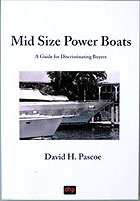
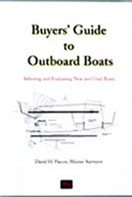

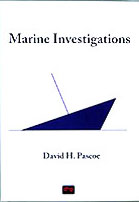
David Pascoe is a second generation marine surveyor in his family who began his surveying career at age 16 as an apprentice in 1965 as the era of wooden boats was drawing to a close.
Certified by the National Association of Marine Surveyors in 1972, he has conducted over 5,000 pre purchase surveys in addition to having conducted hundreds of boating accident investigations, including fires, sinkings, hull failures and machinery failure analysis.
Over forty years of knowledge and experience are brought to bear in following books. David Pascoe is the author of:
In addition to readers in the United States, boaters and boat industry professionals worldwide from nearly 80 countries have purchased David Pascoe's books, since introduction of his first book in 2001.
In 2012, David Pascoe has retired from marine surveying business at age 65.
On November 23rd, 2018, David Pascoe has passed away at age 71.
Biography - Long version